Little is known about the underground world of earthstars' mycelia – the main body of any fungus – but most earthstars grow in association with trees or rotting stumps.
Some earthstars are faithful to the same site year after year, but most are fickle, seldom appearing in the same spot two years running. Several species, including many formerly thought of as rare, are now turning up in mature herbaceous borders that have been liberally mulched with wood chips – Kew Gardens is a particular hotspot.
As with most things fungal, some years are better than others for earthstars.
The earthstar family is known scientifically as Geastraceae, and they are sometimes known as ‘stomach fungi’. They are related to puffballs. Earthstars are inedible, and some are poisonous.
There are more than 15 earthstar species found in Britain, here are seven to look out for:
Collared earthstar (Geastrum triplex)
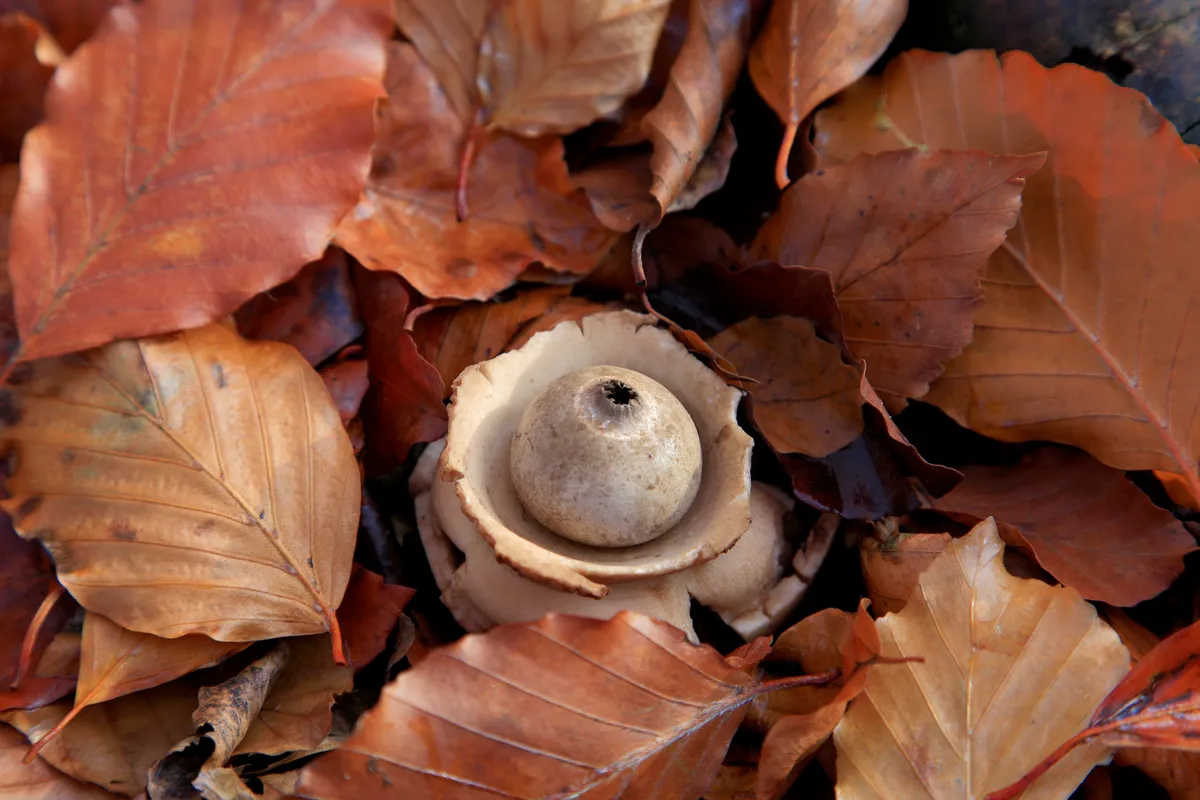
The collared earthstar is our most widespread species, with a diameter between seven and ten centimetres. There are usually between five and seven rays, which crack as they arch and result in the spore sac seeming to sit on a saucer.
It can be found in woods and gardens, often in troops. At first, this earthstar looks like small brown bulb partially or completely buried in the ground. The unstalked spore sac is onion-like with basal collar, with the rays open flat. Usually seen between August and November.
Sessile earthstar (Geastrum fimbriatum)

The sessile earthstar has a dimeter of only two centimetres, and becomes grey with age. It has between five and nine rays, which are cream in colour. It occurs across the UK, but is more common in England than the other countries.
It can be found on undisturbed woodland floor, often near hazel. The fruiting body comprises an acorn-like spore sac and curling rays. Usually seen between August and November.
Striated earthstar (Geastrum striatum)

Fairly widespread, but not common, in England and rarer elsewhere in the UK, the striated earthstar grows to height of five to six centimetres with a spore sac dimeter of one to two centimetres. Look for it in gardens and woods, often under mature Leylandii.
The fruiting body is grey-brown in colour. The stalked spore sac has a pleated opening and basal collar, and the six to nine mature rays arch and curl. Usually seen between August and January.
Arched earthstar (Geastrum fornicatum)
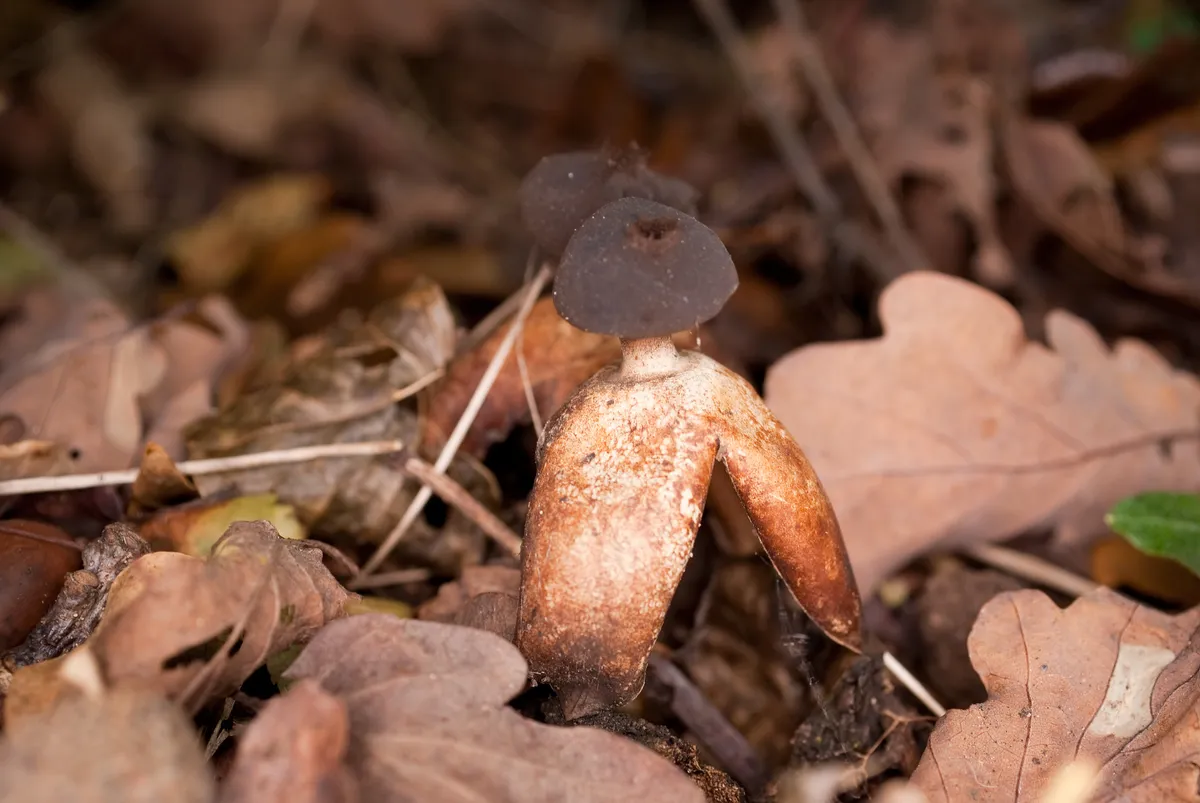
Also known as the acrobatic earthstar, this species has arching rays attached to a short-stalked spore sac. The specific name of fornicatum means ‘vaulted’ or ‘arched’ in Latin. The species grows to a height of seven to nine centimetres, with four or five rays. It is often associated with mature yews or elm stumps in the Welsh borders and south-west. Usually seen between August and February.
Beaked earthstar (Geastrum pectinatum)
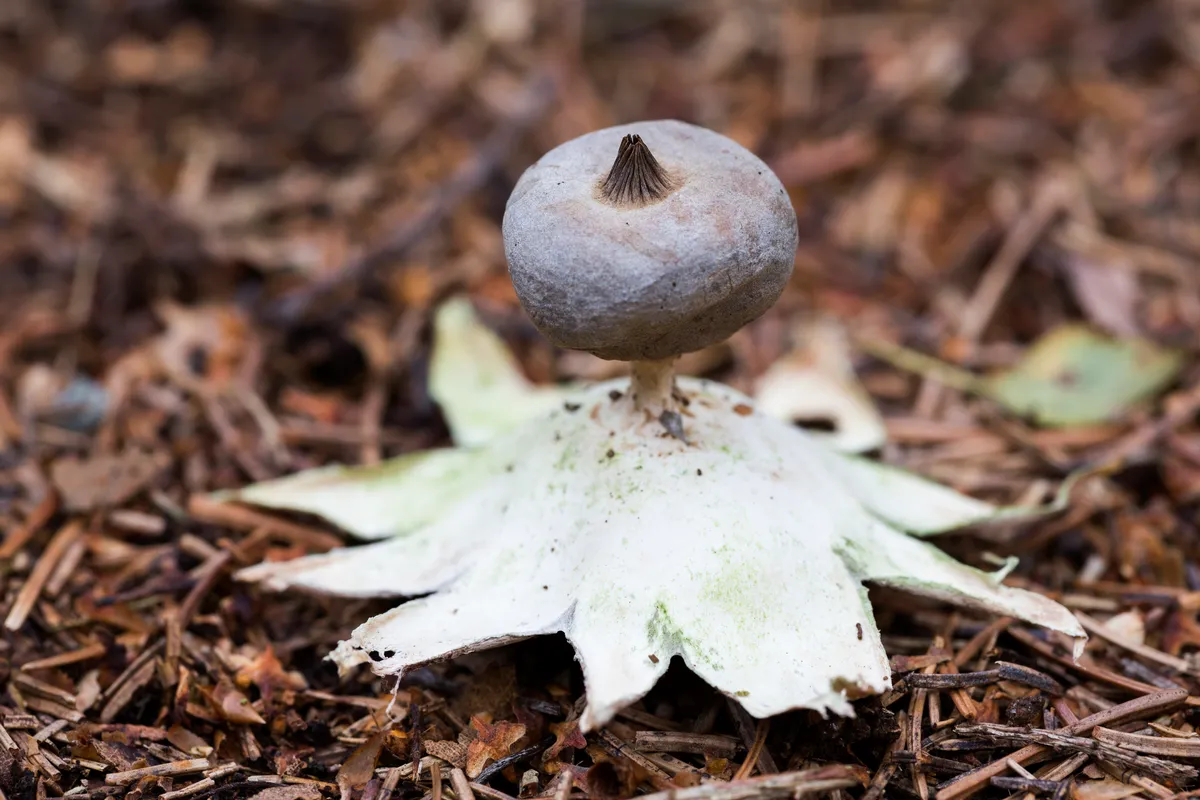
The beaked earthstar is widespread across Britain, but is not a common species and is localised. The grey-blue stalked spore sac is raised off the ground by between arching six and nine rays. It grows to a height of four to five centimetres, and the spore sac has a diameter of one to three centimetres.
It is typically found on hedgebanks near conifers, especially in the east. Usually seen between August and November.
Rayed earthstar (Geastrum quadrifidum)
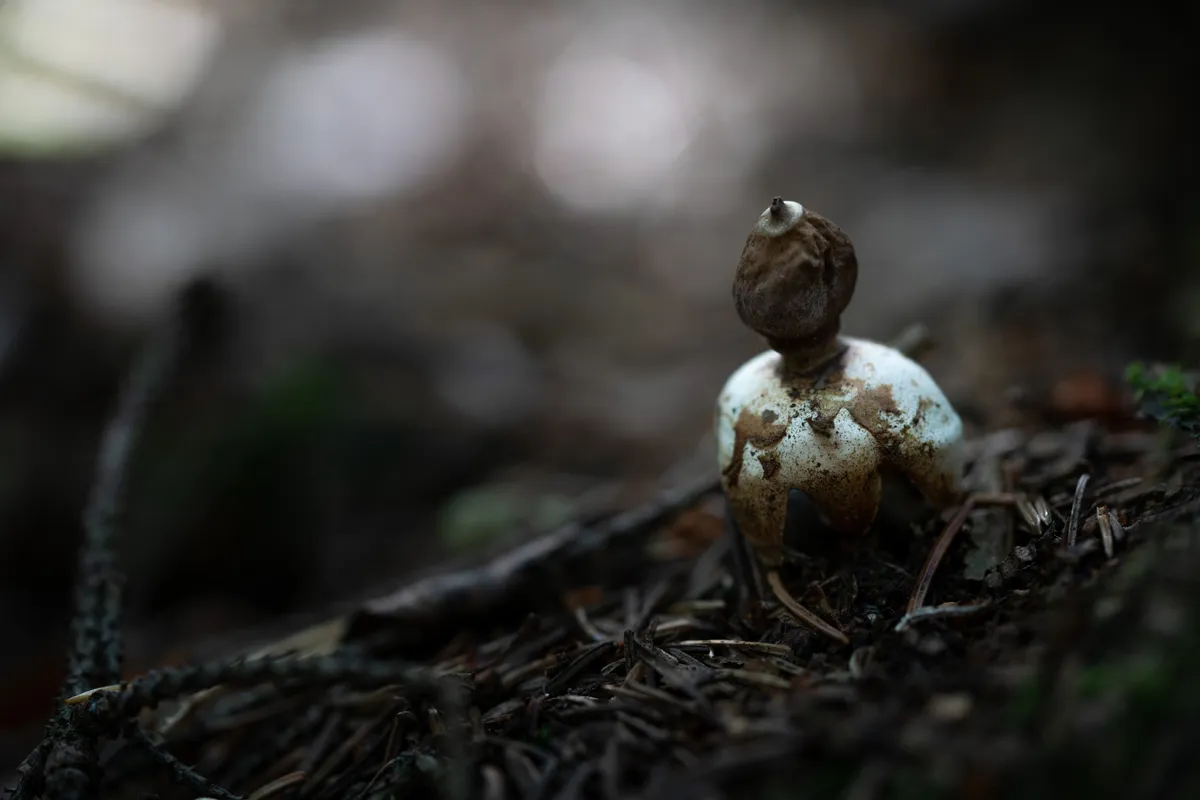
The rayed earthstar is also known as the four-footed earthstar, and has four or five rays. It reaches heights of three to six centimetres, with a grey-brown spore sac that has a fibrous opening and is raised off the ground on arching rays.
Look for it under mature yew or Leylandii in churchyards in the south. Usually seen between August and November.
Rosy earthstar (Geastrum rufescens)

The rosy earthstar has a diameter of between three and five centimetres. The unstalked spore sac is onion-like with no collar, and it has rosy-coloured rays which open flat on the ground. It is mostly found in woods on sandy or chalky soil. Usually seen between August and October.
Daisy earthstar (Geastrum floriforme)

A relatively rare species in Britain, the daisy earthstar is increasingly being found in mature churchyards, often under Leylandii. The specific name floriforme describes its flower shape. It has a rounded spore sac with a diameter of between two and three centimetres, with between five and ten petal-like rays. The rain induces the rays to open. Usually seen between August and November.
Crowned earthstar (Geastrum coronatum)
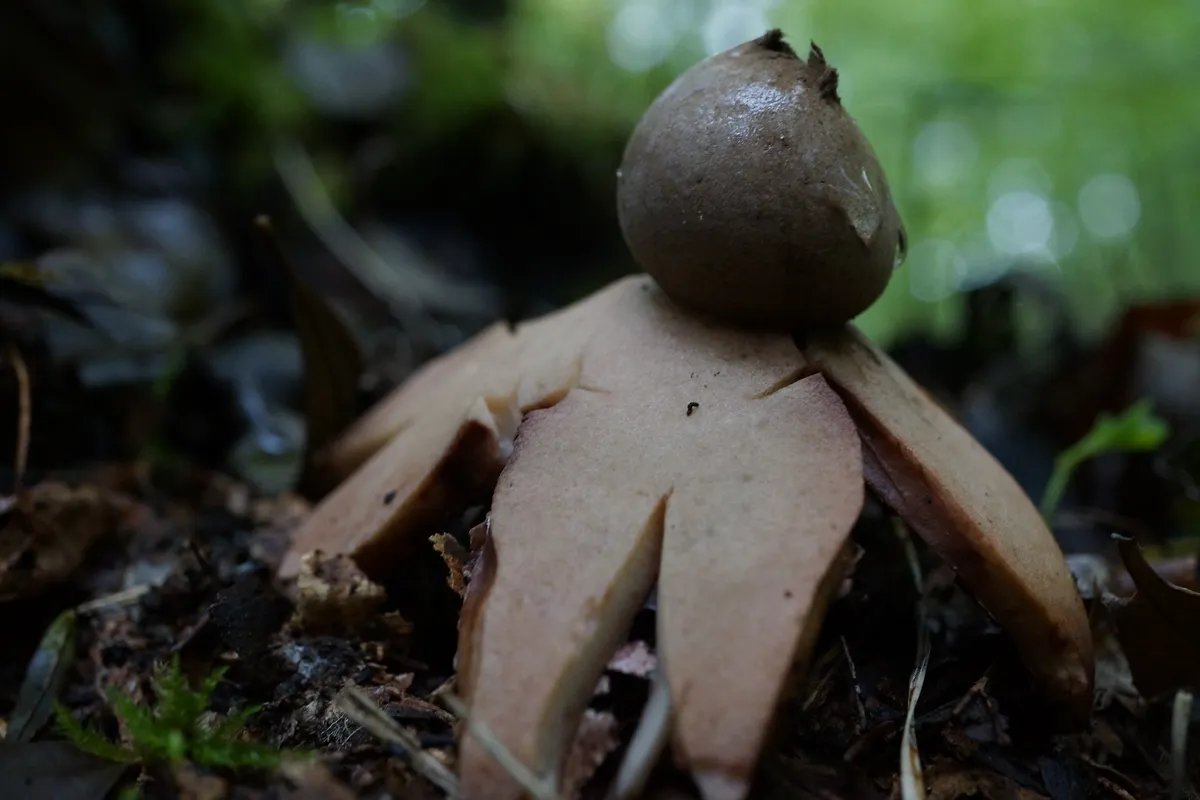
The crowned earthstar is widespread but scarce in Britain, found mostly in the east. It is often found in hawthorn hedges, the short-stalked spore sac reaches a height of between five and seven centiemetres, and is borne on six to ten spreading rays. Usually seen between August and November.
Main image: Sessile earthstar. © Jasius/Getty
